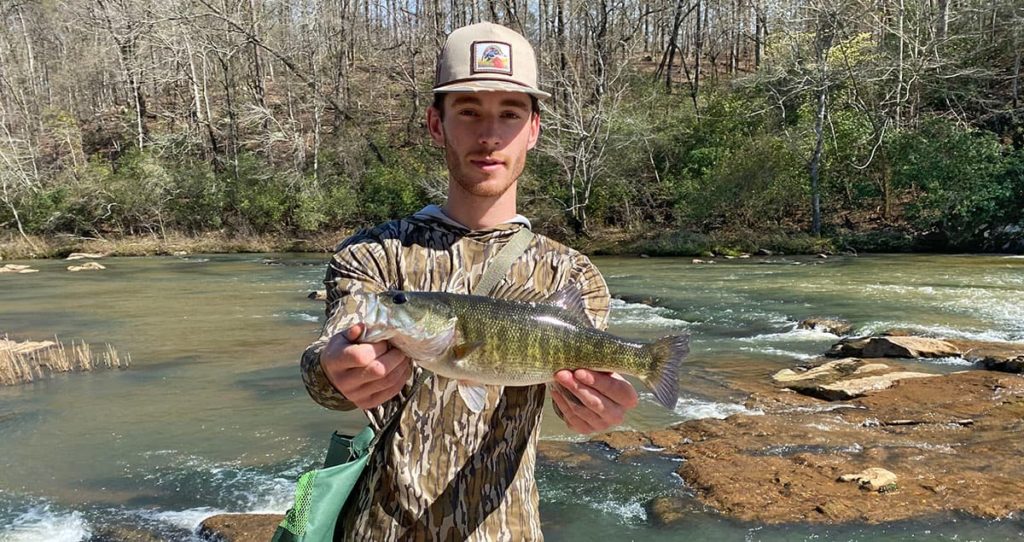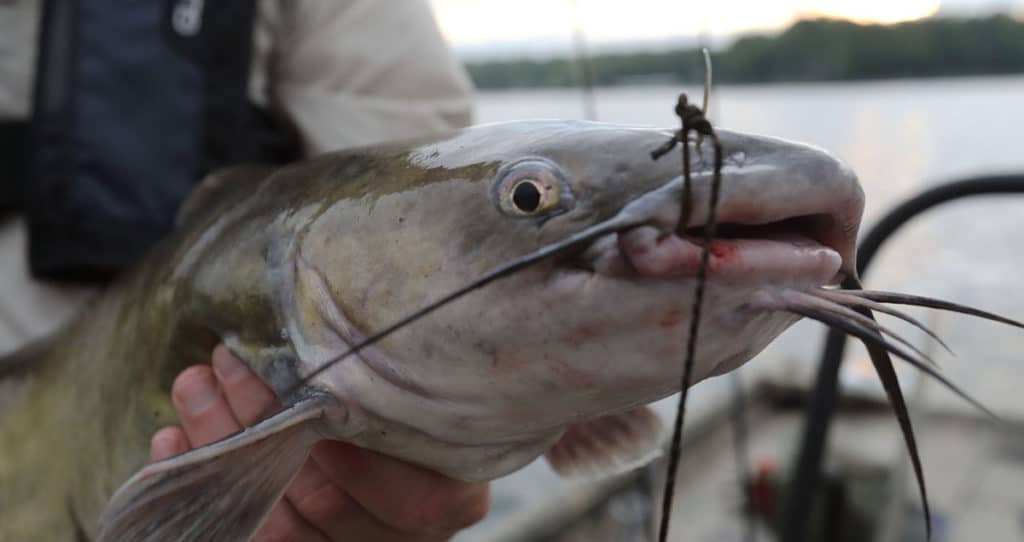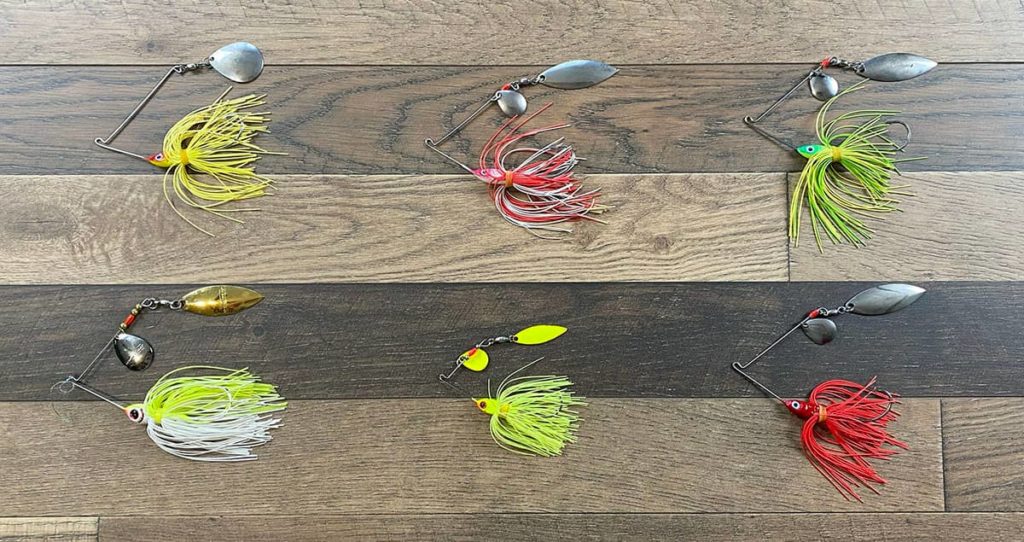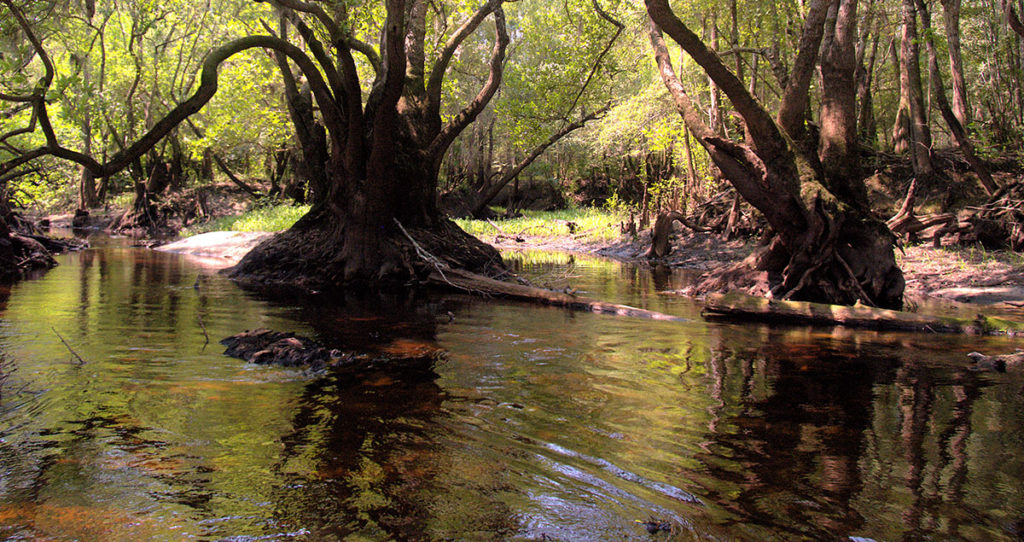We write a lot of content about bluegill fishing due to its popularity and unlimited opportunities in the South. And while many of those articles specifically reference bluegill, they actually apply to a variety of sunfish species. Collectively, southern anglers often refer to these different species as bream (pronounced “brim”).
What is a Bream?
The term bream is not a scientific term. It’s a common term used by anglers, particularly those of us in the South. Most of the fish considered bream are in the family Centrarchidae, or the “Sunfish family.” But Centrarchidae also includes black bass, crappie, and rock bass.
More specifically, bream are typically in the genus Lepomis, which includes the common bluegill and most sunfish species. The one exception is the Flier sunfish — a commonly targeted bream species found in South Georgia and Florida — which is in the Centrarchus genus. More on “fliers” later.
So bream fishing could mean targeting bluegill, redear sunfish, redbreast sunfish, or a variety of other sunfish. In this article, we’re going to look at the most common species of bream caught here in the South, and the similarities and differences between each. Hopefully, this will be a helpful resource the next time you hit your favorite river, lake, or farm pond.
RELATED: Beginner’s Guide to Bluegill Fishing
Common Bream Species
Bluegill
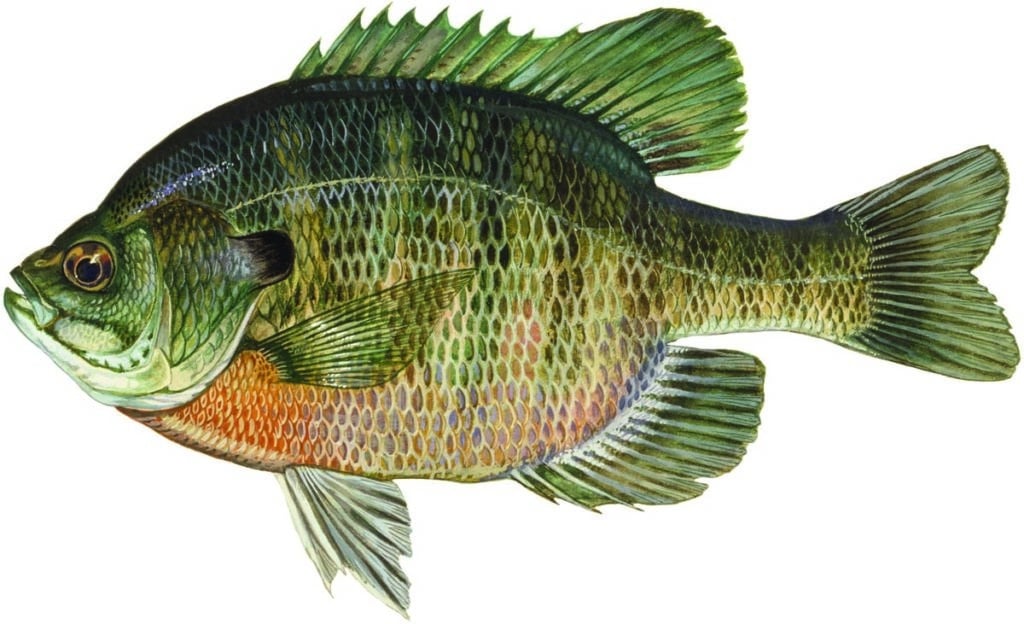
Bluegill (Lepomis macrochirus) are undoubtedly one of the most common freshwater fish caught in the South, and often the first fish many of us caught as a child.
Like all the bream discussed here, bluegill are small, oval-shaped fish that are generally about half as tall as they are long, and thin. They have a small mouth and a long dorsal fin. They are blue-green on top and yellowish on the belly with iridescent blue or purple color on the lower jaw and gill cover. Bluegill have five to nine vertical dark bands running down the sides that fade out towards the belly. The earflap of the gill cover is black.
Bluegill vary in size from a few inches to over a foot long, with most being in the 4 to 6 inch range. They typically weigh a half pound or less, but the largest one on record weighed 4 pounds, 12 ounces, and was caught in Alabama in 1950.
Bluegill prefer the slow moving water of ponds, lakes, reservoirs, as well as some streams and rivers. They also prefer plenty of aquatic vegetation to hide in. The popular fish primarily feed on aquatic insects, small crustaceans, and minnows. They may also consume algae and other plant material.
Redear Sunfish (shellcracker)
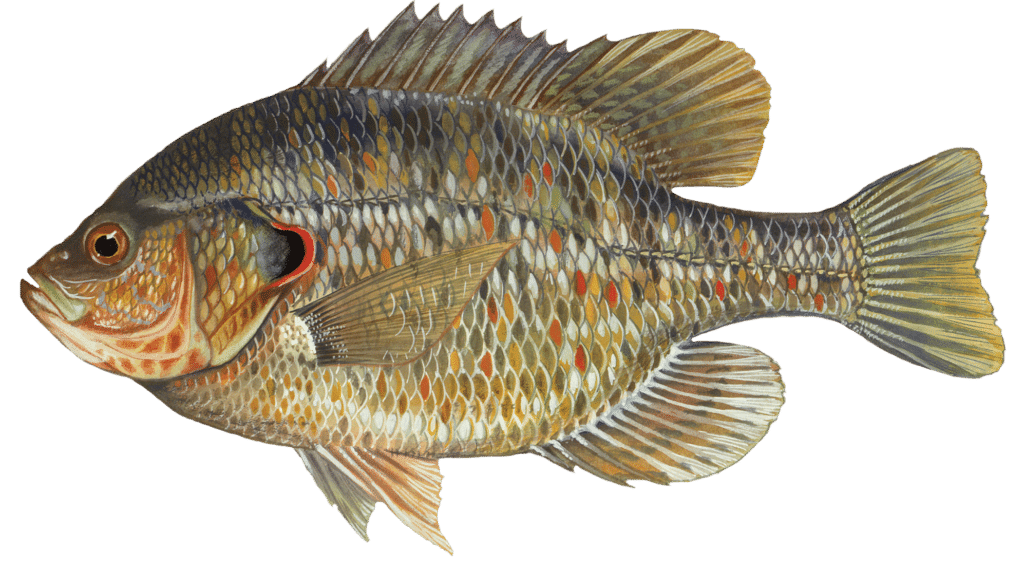
Redear Sunfish (Lepomis microlophus), aka shellcrackers, are similar to bluegill, but with a distinct orange to red edge on the earflap. Their vertical bars aren’t as prominent as those of a bluegill, or may be completely lacking.
Shellcrackers are about the same size as bluegill and are commonly caught in the 8 to 10 inch range and weighing 6 to 12 ounces, although they have been caught weighing over 4 pounds. In fact, the world record weighed 5.8 lbs. and was 17 inches long.
The shellcracker nickname is due to their affinity for eating snails, but they also eat insect larvae and water fleas.
Redear sunfish prefer to live in ponds, lakes, and rivers with clear water and a hard bottom, typically consisting of gravel or sand. They are often found in areas with abundant aquatic vegetation and are known to inhabit deeper water around drop-offs, submerged structure and deeper weed beds.
Redbreast Sunfish

The redbreast sunfish (Lepomis auritus) are known for their vibrant coloration, with a yellow-green to blue-green body, long and narrow black ear flaps, and a bright red breast from which they get their name. These sunfish are relatively small, typically growing to a maximum length of about 8 inches and weighing 1/2 to 3/4 of a pound.
Redbreast sunfish have the most varied diet of any sunfish, commonly feeding on bottom-dwelling insect larvae, snails, clams, shrimp, crayfish, and small fish.
A popular target of southern fishermen, redbreast sunfish are found in streams, rivers, and swamps, as well as in ponds, lakes, and reservoirs. They are one of the most tolerant species of bream to current and are often targeted in river systems.
Common Sunfish (pumpkinseed)
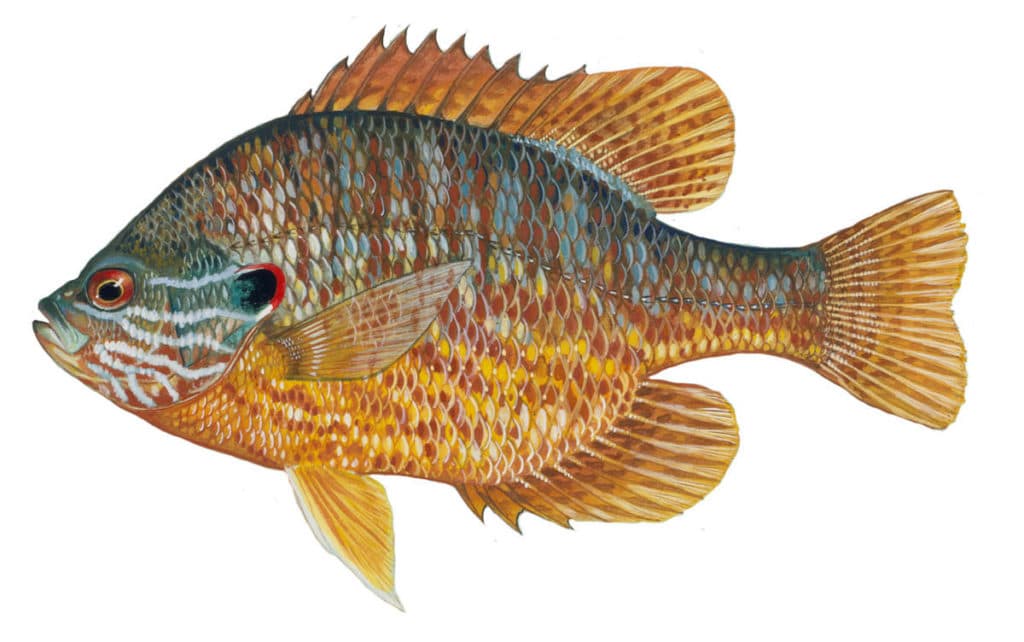
Common sunfish (Lepomis gibbosus), often referred to as pumpkinseeds, have a distinctive coloration, with orange, green, yellow or blue sides with speckles and a yellow-orange breast and belly. They typically grow to a maximum length of about 9 inches, with a maximum weight of about 1 pound. The world record pumpkinseed weighed 1 pound 8 ounces.
Pumpkinseeds are found mainly in the Northeast, but have been introduced and become established in the South. They are found in similar habitats to bluegill, including ponds, lakes, rivers, and streams. They are most commonly found in shallow, weedy areas with abundant aquatic vegetation, as they feed on small crustaceans, insects, and other aquatic invertebrates. They are also known to consume small minnows, worms, and other small fish.
Flier Sunfish

The flier sunfish (Centrarchus macropterus) is the only sunfish on our list not in the Lepomis genus. They actually resemble crappie more than other sunfish, but with 10-13 dorsal spines. Fliers are generally olive-green to brassy in color, with numerous black spots on their sides.
Flier sunfish are typically 5 to 7 inches in length but may reach 8 inches and weigh as much as a pound.
Fliers feed mostly on small crustaceans and aquatic and terrestrial insects, although larger fish feed primarily on insects with fish and crustaceans making up a lesser percentage of the diet.
Flier sunfish prefer quiet, clear bodies of water with little current and plenty of aquatic vegetation. This typically includes swamps, streams, ditches, and borrow pits with clear water, dense vegetation, and little or no current.
Green Sunfish
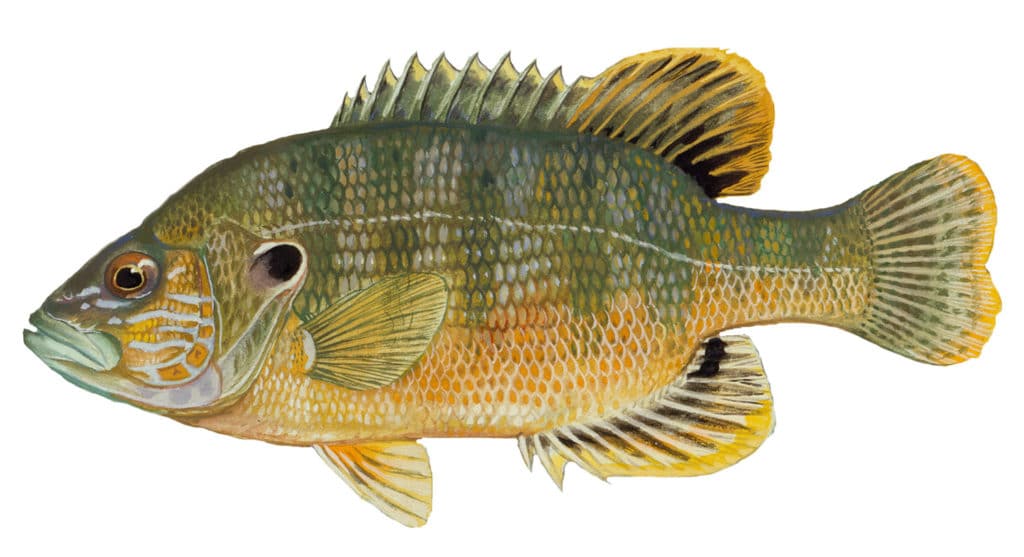
The green sunfish (Lepomis cyanellus) has a thicker body and larger mouth than bluegill and other sunfish species. The back and sides are a bluish-green color that fades to pale yellow or white on the belly. Occasionally, black vertical bars can be seen on the sides. The head has blue spots and streaks. They often have a dark mark on the back of the dorsal fin, a long, dark ear flap, and a rounded pectoral fin.
Green sunfish are typically 6-8 inches in length, but can grow over 10 inches in some circumstances. They weigh 1/2 to 3/4 of a pound.
Like bluegill, green sunfish can be found in any pond, lake, or stream that is capable of supporting fish life. They are often found in pools and backwaters of streams that become isolated and stagnant during the summer or drought.
Green sunfish feed on a variety of aquatic insects, crayfish, snails, mollusks, small fish and fish eggs, as well as aquatic plant material.
Spotted Sunfish (stumpknocker)
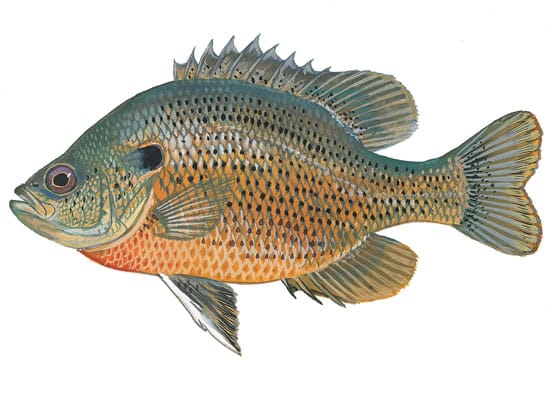
Spotted sunfish (Lepomis punctatus), sometimes referred to as stumpknockers, vary from olive to brown, with distinct, even rows of small spots along the body. Those spots are typically dark, but can also have a red appearance. Stumpknockers are relatively small in size, averaging 5 to 7 inches in length and 1/4 to 1/2 pound.
Spotted sunfish prefer slow-moving, heavily vegetated streams, rivers, lakes and ponds of the southeastern U.S.
These sunfish feed on a variety of invertebrates, insects, small fish and vegetation. They are generally bottom feeders but will sometimes surface to take food.
Summary
Bream fishing provides a great opportunity to have a good time, catch some fish, and even put food on the table for your family. The best part is, you probably have a great spot to catch bream within a short drive of your house. Knowing the different species of bream can be helpful by allowing you to target the most common species where you’re fishing with the right bait placed in the proper location to catch the most fish possible. My hope is that the information provided in this article will allow you to do just that. Good luck and happy fishing!

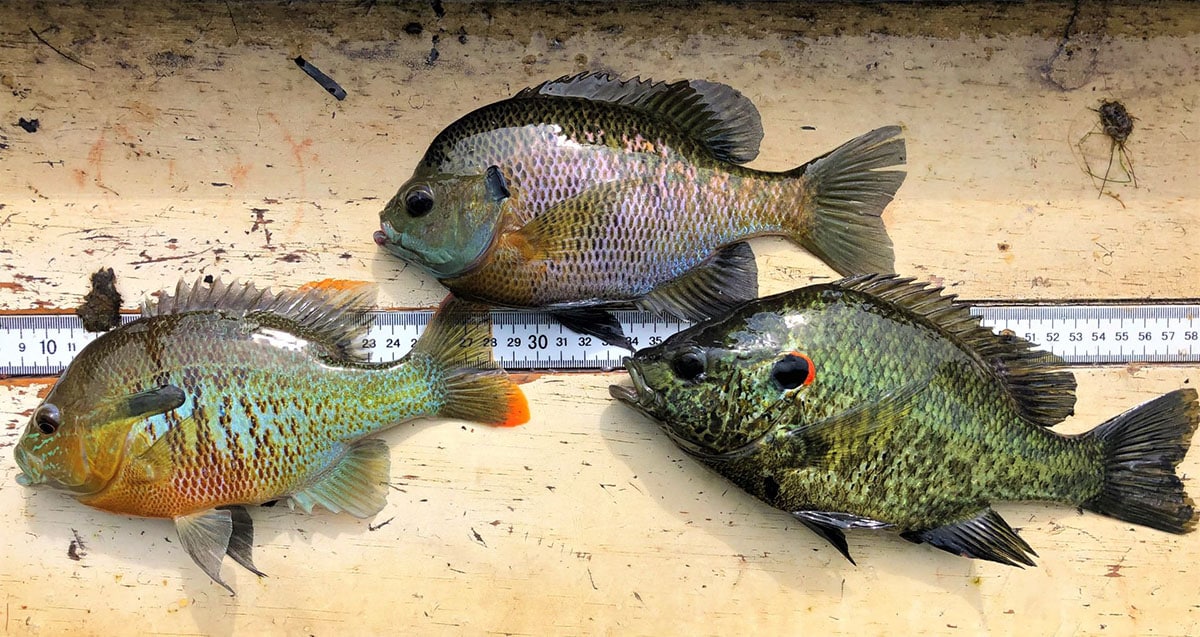
![Which Fish Eat Bluegill, Sunfish, and Other Bream? [Answered]](https://getoutdoorssouth.com/wp-content/uploads/2022/12/bass-eats-bluegill-1024x542.jpg)

